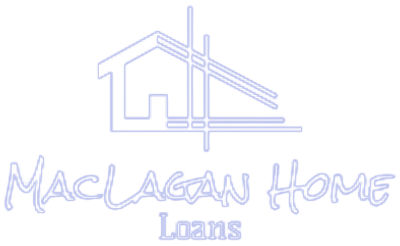Home Equity Line of Credit
Turn your homes equity into cash. If you need money to pay for home improvements, payoff debts, pay for your kids college, or anything else you might need then a home equity line of credit is exactly what you need.
What Are Home Equity Lines of Credit (HELOC)?
A Home Equity Line of Credit (HELOC) is a flexible financial tool that allows homeowners to borrow against the equity they’ve built in their home. Unlike a traditional loan that provides a lump sum, a HELOC works more like a credit card – you’re approved for a maximum credit limit and can draw funds as needed during the “draw period,” typically 5-10 years. During this time, you’ll usually only pay interest on the amount you’ve borrowed. After the draw period ends, you’ll enter the repayment period where you’ll pay back both principal and interest. HELOCs typically offer competitive variable interest rates and the potential tax advantages of mortgage interest deductibility, making them a popular choice for home improvements, education expenses, debt consolidation, or as an emergency fund.
What Do You Need To Qualify for a Home Equity Loan (HELOC)
- Maximum Combined Loan-To-Value: 90%
- Need 10% Equity Remaining In The Property
- Minimum 620 Credit Score Needed
- Maximum Debt-To-Income Ratio 50%
- Property Usage: Primary, Second / Vacation Home, and Investment Property
- Eligible Property Types: Single Family Home, Townhomes, Condos, and Multi-Family (1 to 4 Units)
Who Are Home Equity Lines of Credit for?
HELOCs serve homeowners at various life stages who need access to substantial funds with payment flexibility:
Growing Families: Parents expanding their homes to accommodate growing children or returning adult family members.
Empty Nesters: Homeowners renovating to create their dream retirement space after children move out.
Mid-Career Professionals: Individuals leveraging home equity for investment opportunities or to start side businesses while maintaining career stability.
Education Planners: Families supporting children through college or adults funding continuing education to advance their careers.
Pre-Retirees: Homeowners completing major home improvements before retirement when income may decrease.
Debt Consolidators: Individuals strategically combining multiple high-interest debts into one potentially tax-deductible obligation.
Emergency Preparers: Prudent homeowners establishing financial safety nets for unexpected expenses without paying interest until funds are needed.
The ideal HELOC candidate has built substantial equity, maintains good credit, demonstrates stable income, and appreciates flexible borrowing options. MacLagan Home Loans specializes in matching homeowners with the right HELOC solution for their current life stage and financial goals.
The Home Equity Line of Credit Process and How To Get Started
CONSULTATION → APPLICATION → DOCUMENTATION → APPRAISAL → UNDERWRITING → CLOSING → ACTIVATION
Begin With a Consultation Discuss your financial needs and goals with our HELOC specialists. We’ll explain how these flexible credit lines work and help determine if they’re right for you. No obligation—just expert guidance.
Complete Your Application Apply online in about 15 minutes, by phone. We’ll need basic information about your income, property, existing mortgage, and desired credit line amount.
Gather Documentation Submit supporting materials including:
- Recent pay stubs or proof of income
- Tax returns (typically last 2 years)
- Property information
- Existing mortgage statements
- Homeowner’s Insurance Info
- Personal identification
Once we get started on your HELOC, It will take anywhere from 5 days to 21 days and you will have turned your home’s equity into cash!


Why a Home Equity Line of Credit?
A Home Equity Line of Credit (HELOC) is a great option when you do not want to touch the low interest rate on your current mortgage. A HELOC basically turns your home’s equity into a credit card for when you need additional money.
Most borrower’s use a HELOC to do home improvements, pay off debts, pay for a child’s college tuition, have an emergency fund, and more.
Ready to see if you qualify? Click “Help Me Qualify Now!” and take the first step toward turning your home’s equity into cash.
Get approved Quick & Easy!
Loans we offer
Your Home Loan Could Be Fully Funded 21 Days From Now Without Any Hassles!
Conventional Loans
A popular mortgage option for borrower’s with strong credit and stable income. Down payments as low as 3% and with competitive and adjustable rate options.
Read moreBank Statement Loans
The best mortgage option for self-employed borrowers. If you take all of your write offs on your tax returns and can’t qualify for a conventional loan, this is the perfect mortgage option for you.
Read moreVA Loans
The best loan option for eligible military veterans and active duty service members. 100% financing and no mortgage insurance.
Read moreJumbo Loans
A great mortgage option for borrower’s looking to finance a home that exceeds conventional loan limits. Down payments as low as 10%.
Read moreDSCR Loans
Rental property loans that require no income or employment verification. The best loan for real estate investors and landlords
Read moreFix & Flip Loans
The perfect loan option for real estate investors who are looking to finance a property that needs renovation. Finance 100% of the renovation with down payments as low as 10% of the purchase price.
Read moreHome Equity Line of Credit FAQ
What is a disadvantage of a home equity line of credit?
While HELOCs offer many benefits, they do have drawbacks. The most significant concern is that your home serves as collateral, meaning foreclosure is possible if you default on payments. HELOCs have adjustable interest rates that can increase over time, potentially making your payments less affordable than anticipated. The revolving credit structure may tempt some homeowners to continually borrow against their equity, treating their home like an ATM rather than an investment. Some lenders also impose fees for inactivity, early termination, or annual maintenance. Finally, if property values decline, your lender might freeze or reduce your credit line, potentially limiting access to funds when you need them most.
Do you have to pay taxes on a home equity line of credit?
No, you don’t pay taxes on HELOC funds when you receive them because loan proceeds aren’t considered income. However, HELOC interest deductibility is more limited now. Under current tax laws, interest paid on a HELOC is only tax-deductible if the funds are used specifically for buying, building, or substantially improving the home that secures the loan, and only if your total mortgage debt (including the HELOC) doesn’t exceed $750,000 ($375,000 if married filing separately). If you use your HELOC for other purposes like debt consolidation or education expenses, the interest is generally not tax-deductible. We recommend consulting with a tax professional regarding your specific situation, as tax laws can change and individual circumstances vary.
Can you pay off a HELOC early?
Yes, you can pay off a HELOC early, and doing so offers several advantages. Early repayment reduces your total interest costs and rebuilds your home equity faster. At MacLagan Home Loans, our HELOCs feature open-ended repayment terms, meaning you can make additional principal payments or pay off the entire balance at any time during both the draw and repayment periods. Many clients establish strategic prepayment plans—making additional principal payments when they receive bonuses, tax refunds, or other windfalls—while maintaining their HELOC for future flexibility. Our team can help you develop a personalized repayment strategy that maximizes your financial benefits.
Is it better to do a cash-out refinance or home equity line of credit?
The choice between a cash-out refinance and a HELOC depends on your specific financial situation and goals.
When you take out a HELOC, and you have an existing first mortgage, you need to look at your combined interest rate. Lets say your current first mortgage is $200,000 with a 3% interest rate and the HELOC you are getting has a loan amount of $150,000 with a 12% interest rate. Your combined interest rate would be 6%. Then on the flip side if you just did a cash out refinance for with a loan amount of $350,000 with an cheaper interest rate of 5.75%. Then doing a cash-out refinance is better.
Always look at the combined interest to determine if a cash-out refinance or HELOC is your best option.
What is the difference between a HELOC and a home equity loan?
A HELOC and a home equity loan differ primarily in structure, flexibility, and payment terms.
A home equity loan provides a one-time lump sum with a fixed interest rate and consistent monthly payments throughout the loan term. Like a traditional mortgage, you’ll pay both principal and interest from the beginning until the loan is fully repaid. This predictability makes home equity loans ideal for specific, one-time expenses with known costs.
A HELOC, however, works more like a credit card secured by your home. It provides a revolving credit line that you can access repeatedly during the draw period (typically 5-10 years). HELOCs usually offer variable interest rates and flexible payment options, including interest-only payments during the draw period. This adaptability makes HELOCs well-suited for ongoing projects, expenses spread over time, or establishing financial safety nets. When the draw period ends, you’ll enter the repayment phase where borrowing stops and you repay the outstanding balance, typically over 10-20 years.
At MacLagan Home Loans, we analyze your specific funding needs, timeline, and financial preferences to recommend the most advantageous option for your situation.
